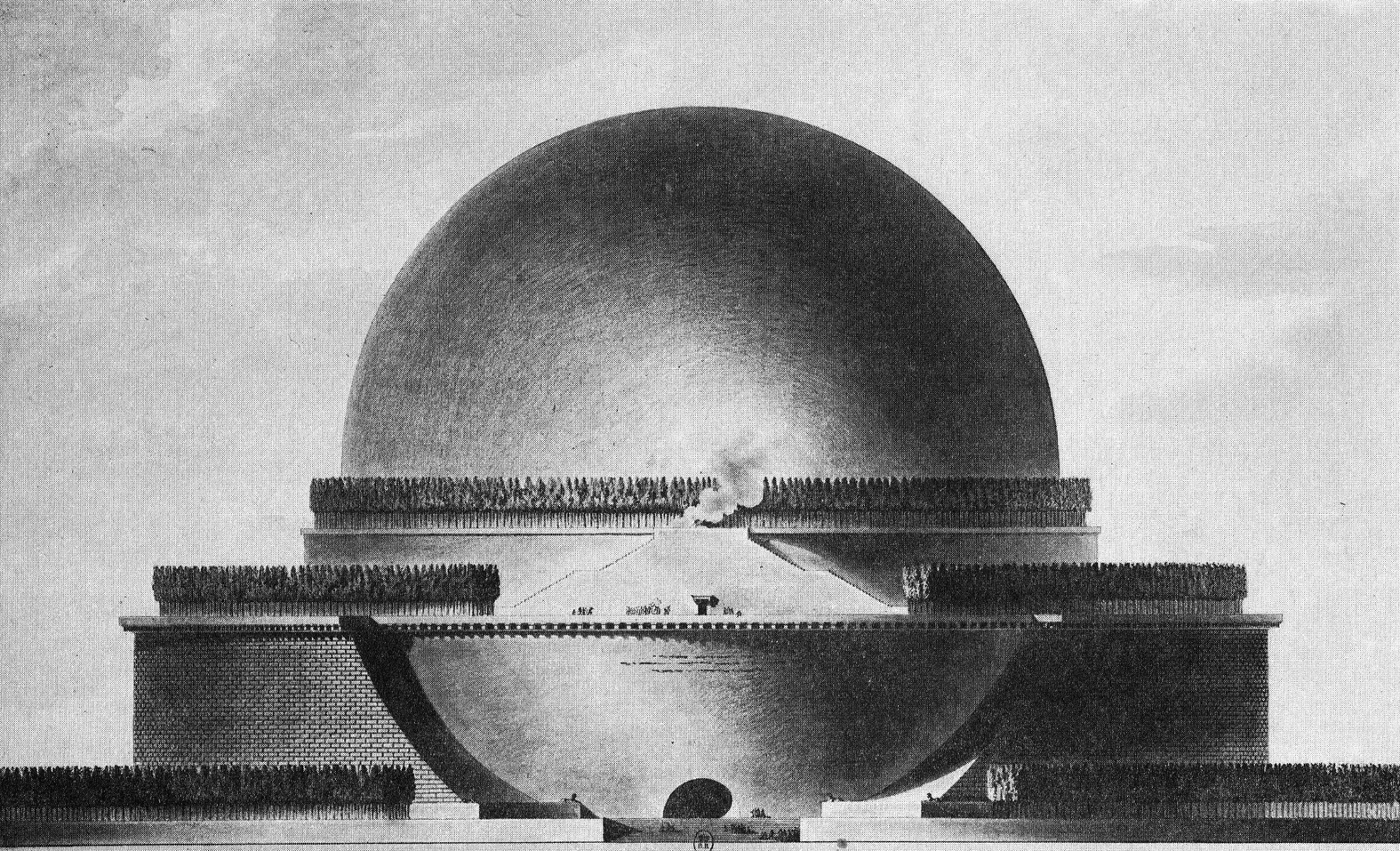ÉTIENNE-LOUIS BOULLÉE

Cénotaphe à Newton
Boullée promoted the idea of making architecture expressive of its purpose, a doctrine that his detractors termed architecture parlante (“talking architecture”), which was an essential element in Beaux-Arts architectural training in the later 19th century. His style was most notably exemplified in his proposal for a cenotaph (a funerary monument celebrating a figure interred elsewhere) for the English scientist Isaac Newton, who 50 years after his death became a symbol of Enlightenment ideas. The building itself was a 150 m (500 ft) tall sphere, taller than the Great Pyramids of Giza, encompassed by two large barriers circled by hundreds of cypress trees. The massive and spheric shape of the building was inspired by Boullée’s own study called “theory of bodies” where he claims that the most beautiful and perfect natural body is the sphere, which is the most prominent element of the Newton Memorial. Though the structure was never built, Boullée had many ink and wash drawings engraved and circulated widely in the professional circles in 1784. The small sarcophagus for Newton is placed at the lower pole of the sphere. The design of the memorial is intended to create the effect of day and night. The night effect occurs when the sarcophagus is illuminated by the sunlight coming through the holes in the vaulting, giving the illusion of stars in the night sky. The day effect is an armillary sphere hanging in the center that gives off a mysterious glow. Thus, the use of light in the building’s design causes the building’s interior to change its appearance.

